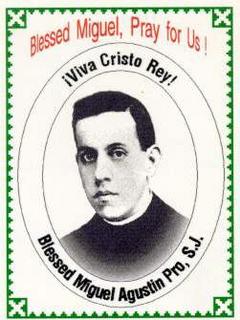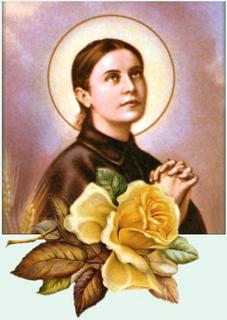
Saint and Martyr
Like many countries Mexico too had its problems, an evolving democracy supported by Benito Juarez soon gave way to his growing greed for power at any cost. Therefore among his causalities was the Catholic Church as government repression tried to suppress the Church's unique place in the culture of Mexico.
Though Mexico suffered through wars most especially with France as Napoleon had designs on Mexico, the Juarez government fled and in its place for a short period of time was Archduke Maximilian of Austria, but still the people were restless.
Juarez would return to Mexico and once again resume power, but this time all pretences of democracy were abandoned in favour of outright dictatorship! And through the policies of Juarez the Mexican people suffered great poverty and hardship as the rich grew richer and the poor became poorer.
But Juraez was once again to flee his country when he was forced to resign in 1911. This followed many toppling governments and regimes, and ushered in the government of Calles when he took the Presidency. This was a time of even further turmoil for the Catholic Church under the restrictive government of Calles, as persecution became the order of the day.
But before these persecutions took effect was born one Miguel Pro, who was lovingly welcomed into his large Mexican family of very devout Catholics, in the year 1891. Miguel from early in his age showed himself to be a prankster who loved jokes, and making people laugh, even if it meant making a spectacle of himself. He brought much joy into the Pro family although at times his parents had to gently discipline their prankster son.
But through Miguel’s humour it helped the family cope with the increasing persecutions of the Mexican Regime, and this young man was to become greatly loved by all who met him.
And though for a while Miguel drifted from his Faith, it was due to the influence of his loving but faith filled parents that Miguel did not stray far, he soon returned to his Faith, much to his parents joy!
Miguel along with two other members of his family felt a calling to the Religious life, and so in 1911 he entered the Order of the Jesuits. But his Religious life did not evolve smoothly due to the persecutions being waged in Mexico. His superiors decided to smuggle Miguel out of Mexico and so the poor lad took refuge in Texas before travelling on to Belgium, where he took his Holy Vows, in 1925.
But Fr. Miguel loved his native land and he returned to Mexico in 1926. But he also returned to a country that was living under tyranny as many Catholics were persecuted, and Priests were ordered not to take part in any public worship.
This did not deter Fr. Miguel one bit as he with great cunning outwitted the authorities and welcomed many to Mass which was held in the greatest secrecy. At times when the officials were getting too close Fr. Miguel would pretend to be a mechanic, or he would pretend to be on dates with young ladies, who would protect him as they helped him administer the Sacraments to the people.
The people loved Fr. Miguel who despite such subterfuges, kept the Faith alive and strong in his parishioners, as well as a humorous jokes and simple fun to help alleviate everyone’s fear. He also with great risk to himself help carry food and other needed necessities to the poor in his area.
But time was running out for Fr. Miguel and upon an assassination attempt on the President, the authorities arrested both Fr. Miguel and his brothers.
Fr. Miguel with his brothers were led to a firing squad and as one of the soldiers approached and begged the forgiveness of Fr. Miguel which he freely gave with these words, "You have not only my forgiveness but my thanks". And when facing the firing squad he told all the soldiers gathered for this dreadful deed, "May God forgive you all". And with these words ringing in the air "Viva Cristo Rey"! The firing squad opened fire and though Fr. Miguel was wounded as none of the soldiers had the heart to be the ones who killed a Holy Priest, hence the general walked over and fired the shot that killed Fr. Miguel.
Father Miguel died by execution in 1927.
Blessed Father Miguel Pro was beatified in 1988 by Pope John Paul ll.
Father Miguel had once told a friend if ever he were caught and was killed upon reaching Heaven he would perform a Mexican hat dance, in case he met any long faced Saints. Indeed Blessed Miguel Pro was one of a kind, and beloved by ALL.
Peace of Christ to you ALL
Copyright © 2005 Marie Smith. All rights reserved.



